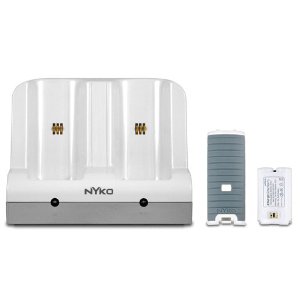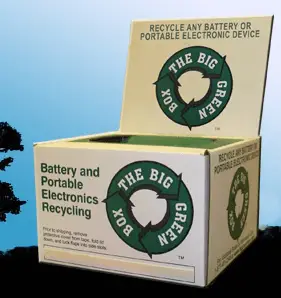Part 2: Buying and Disposing of Batteries for Gadgets
 Have you started saving disposable batteries yet?
Have you started saving disposable batteries yet?
Part 1 of this two part series about batteries provided you with the basics on disposable household batteries. If you decided to start saving batteries to see how many you use on a regular basis, you may be ready to consider an alternative.
Rechargeable Batteries
There are two options for reducing the cost and waste of everyday household batteries: rechargeable batteries and battery packs.
Rechargeable batteries look the same as your everyday, single use batteries, but you can buy a charger that extends their life by 100s of uses. The most commonly found rechargeable batteries are AA and AAA—probably the same size batteries you’re constantly replacing in your TV remote, digital camera and Zhu Zhu Pets. A little extra money will buy a charging unit that brings your rechargeables back to 100 percent in 15 minutes or less.
Alkaline batteries, the most common form of disposable batteries covered in Part 1 of this series, are not intended for recharging. It’s stated on the packaging. Instead, buy rechargeable batteries made with either nickel-cadmium (NiCd) or nickel metal hydride (NiMH). Each type of battery works better in different applications, but in general, NiMH is the less environmentally harmful alternative, tends to have a longer life, and doesn’t require you to fully use a charge before recharging. Both types come in standard AA and AAA sizes.
Many battery packs also use NiMH or NiCD. The rechargeable packs securely house battery components, connecting them in a way that increases the total voltage and/or voltage capacity. A built-in temperature sensor helps detect the end of charging to avoid overheating. Well-designed battery packs balance the electrical circuit so that the pack lasts longer and delivers better performance. In general, you’ll get what you pay for.
Making the Switch to Rechargeable Batteries
Any device that takes AA or AAA batteries will have a single-use and rechargeable battery option—whether you buy rechargeable batteries and a charger or a battery pack. So what’s the best option?
For convenience sake, it’s always wise to keep single-use batteries on hand. If your camera battery dies before your kid blows out the candles on his cake, you won’t have 15 minutes for a “rapid charge.”
Another convenient choice is a battery pack that comes with a storage base that does the charging. Most cordless phones work this way, and there are options for other battery eaters like remotes for the Nintendo Wii or “Wiimote.” Store the device in its charging stand so that it’s always ready when you need it.
Some battery packs can be easily removed and charged independent of the device, so, having two packs allows for continuous use-and continuous charging. Well-made battery packs should last longer than individual, rechargeable batteries, but they still have a limited lifespan.
Some people prefer individual, rechargeable batteries over battery packs because you have a single solution for multiple household devices.
Recycling Rechargeable Batteries
Every battery, even a rechargeable battery or battery pack, has a limited lifespan. As mentioned in Part 1 of this article, collecting batteries has become a common trend among retailers. Some places send the batteries off to reputable recycling organizations, some sort the batteries and only recycle the ones with valuable components (usually rechargeables), and others throw them all in the trash.
Rechargeable batteries absolutely cannot go in a can on the curb or get ditched in a dumpster. NiCd batteries, in particular, are identified by the Environmental Protection Agency as hazardous waste because cadmium is a toxic heavy metal. Even though NiMH batteries aren’t hazardous, they contain valuable elements that can be affordably recycled for the manufacturing of stainless steel.
Rules and regulations on the disposal of batteries vary from state to state. The stricter the state, the more recycling options you’ll find in your community. If a well-intentioned retailer can’t confirm details about their recycling program, use www.Earth911.com to find a reputable recycling center near you.
Some retailers like Walgreens and Whole Foods participate in the Big Green Box program, which requires them to buy a display box. The purchase price of the box helps covers the higher cost of recycling alkaline and other harder-to-recycle batteries. Hopefully the purchase price of the box also incents retailers to act responsibly.









